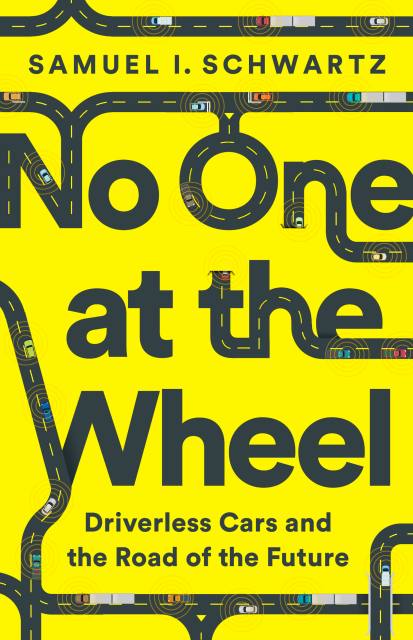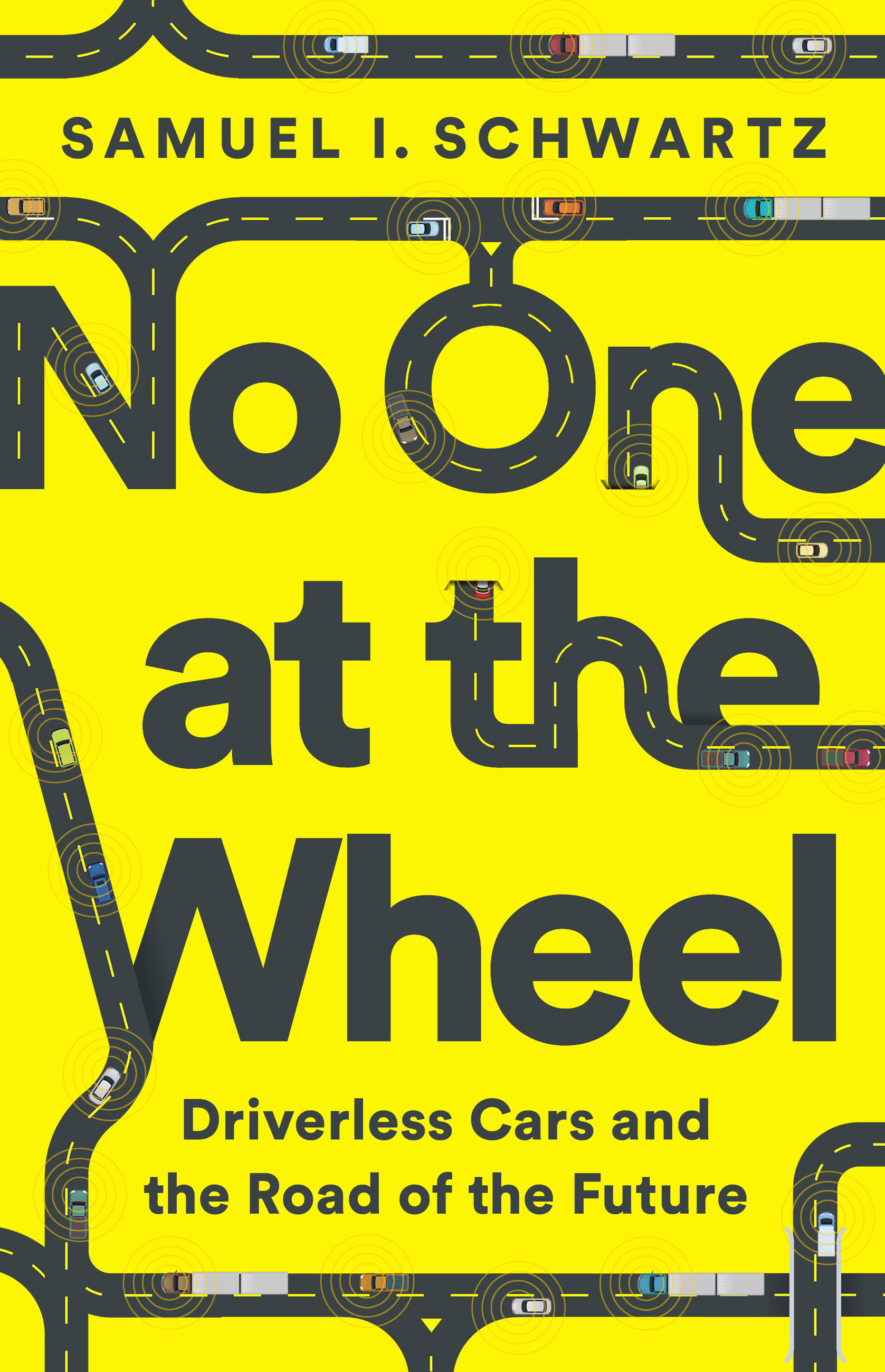Promotion
Use code MOM24 for 20% off site wide + free shipping over $45
No One at the Wheel
Driverless Cars and the Road of the Future
Contributors
With Karen Kelly
Formats and Prices
Price
$17.99Price
$22.99 CADFormat
Format:
- ebook $17.99 $22.99 CAD
- Hardcover $28.00 $36.50 CAD
- Audiobook Download (Unabridged)
This item is a preorder. Your payment method will be charged immediately, and the product is expected to ship on or around November 20, 2018. This date is subject to change due to shipping delays beyond our control.
Also available from:
Our time at the wheel is done. Driving will become illegal, as human drivers will be demonstrably more dangerous than cars that pilot themselves. Is this an impossible future, or a revolution just around the corner?
Sam Schwartz, America’s most celebrated transportation guru, describes in this book the revolution in self-driving cars. The ramifications will be dramatic, and the transition will be far from seamless. It will overturn the job market for the one in seven Americans who work in the trucking industry. It will cause us to grapple with new ethical dilemmas-if a car will hit a person or a building, endangering the lives of its passengers, who will decide what it does? It will further erode our privacy, since the vehicle can relay our location at any moment. And, like every other computer-controlled device, it can be vulnerable to hacking.
Right now, every major car maker here and abroad is working on bringing autonomous vehicles to consumers. The fleets are getting ready to roll and nothing will ever be the same, and this book shows us what the future has in store.
Genre:
-
""[Schwartz] knows everything about how cars and people don't get along, having been on the front lines. This book - written in an earnest, conversational style - is his attempt to grapple with a fresh threat that's appeared after decades of progress.... If we heed Gridlock Sam and this valuable, humane book as we move toward a future in which we largely surrender the wheel, we can avoid messing up again."New York Times Book Review
-
"This is an essential treatise on a technology whose development and regulation will have an impact on 'the future health of people, economies, cities, and more."Publishers Weekly, Starred Review
-
"It's safe to say that few people on the planet know more about guiding vehicles from place to place than Schwartz, an engineer who served as New York City's traffic commissioner for years...An invigorating bit of future-trend prognosticating, generally positive, if warning direly of global gridlock if trends continue. Urban planners, architects, and transportation activists will definitely want to take note."Kirkus
-
"Sam Schwartz does a great job of seeing the systems implications to the introduction of autonomous vehicles. No One at the Wheel helps us imagine a world with augmented driving experiences, and how this technology will change transportation as we know it."James P. Hackett, President and CEO of Ford Motor Company
-
"Cities need fewer futurists to marvel about transportation technology and more street sages like Sam Schwartz to keep sight of our urban fundamentals. No One at the Wheel tells us how to take cities off of autopilot and shape the driverless future we want to see on our streets."Janette Sadik-Khan, author of Street Fight and former Commissioner of the New York CityDepartment of Transportation
-
"This is an excellent book. Sam Schwartz is a giant who has spent a career doing all he can to deliver transportation services that improve the quality of lives. A must-read!"Alain Kornhauser, host of SmartDriving Cars and professor at Princeton University
-
"No One At The Wheel gives a balanced primer on the good, the bad and the ugly potential for autonomous vehicles, but with a dose of critical history and great storytelling. Read this book if you want to shape the future vs. let it happen to you."Gabe Klein, author of Start-UpCity, co-founder of CityFi, and formerCommissioner of the Chicago and Washington DC Departments of Transportation
-
"No One at the Wheel is a must read for anyone in business, public policy, education or planning to live in the future. Sam is simply brilliant!"Jim Simpson, transportationentrepreneur and former Transportation Administrator at the United StatesDepartment of Transportation
- On Sale
- Nov 20, 2018
- Page Count
- 272 pages
- Publisher
- PublicAffairs
- ISBN-13
- 9781541724044
Newsletter Signup
By clicking ‘Sign Up,’ I acknowledge that I have read and agree to Hachette Book Group’s Privacy Policy and Terms of Use






